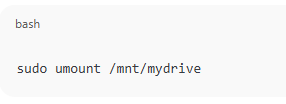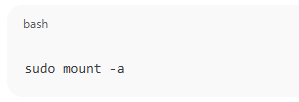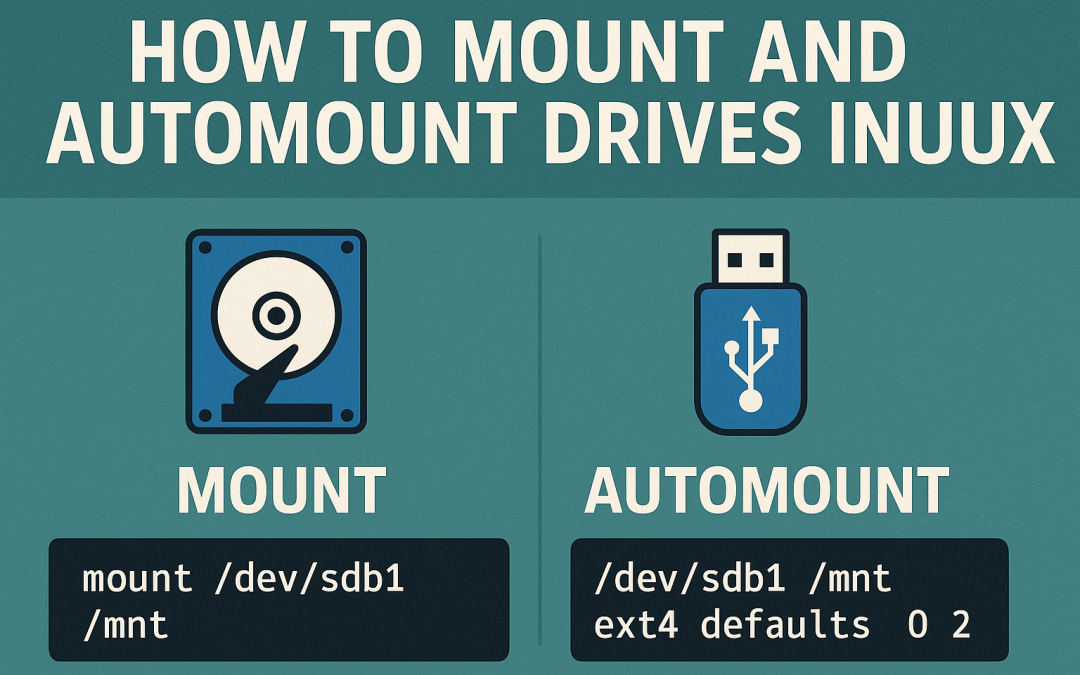Linux offers flexible options for managing storage, including mounting drives manually or automatically at boot. Whether you’re using internal hard drives, SSDs, or external USB storage, understanding how to mount drives is essential for efficient system administration.
📁 What Is Mounting in Linux?
In Linux, mounting is the process of making a filesystem accessible at a certain point in the directory tree. Unlike Windows (which uses drive letters), Linux uses mount points like /mnt or /media.
🔌 How to Mount a Drive Manually
- Identify the drive:

sudo fdisk -lLook for something like
/dev/sdb1. - Create a mount point:

sudo mkdir /mnt/mydrive - Mount the drive:

sudo mount /dev/sdb1 /mnt/mydrive - Access your files:Navigate to
/mnt/mydriveto view the contents. - Unmount (when done):

sudo umount /mnt/mydrive
🔁 How to Automount Drives at Boot (Using /etc/fstab)
- Find the UUID of the drive:
sudo blkid - Edit
/etc/fstab:Open the file using:sudo nano /etc/fstab - Add an entry like this:
UUID=xxxx-xxxx /mnt/mydrive ext4 defaults 0 2Replace
UUID=xxxx-xxxxwith your actual UUID, andext4with your file system type (e.g.,ntfs,vfat). - Test the configuration:

sudo mount -a
📦 Automounting External Drives with udevil or udisksctl
For desktop systems:
- GNOME and KDE automatically handle USB devices via
udisks2. - CLI tools like
udisksctlorudevilcan also be used.
Example:
udisksctl mount -b /dev/sdb1
✅ Best Practices
- Always unmount external drives before removing them.
- Use UUIDs in
/etc/fstabinstead of device names (/dev/sdb1) to avoid conflicts. - For NTFS or FAT32, install
ntfs-3gordosfstoolspackages.
How to Mount and Automount Drives in Linux (F.A.Q)
How do I know what filesystem my drive uses?
Run sudo blkid or lsblk -f to see the filesystem type (e.g., ext4, ntfs, vfat).
What happens if I mess up /etc/fstab?
Your system may fail to boot. Boot into recovery mode or use a live USB to fix the file.
Can I mount drives read-only?
Yes, use ro instead of defaults in the mount options:
How to automatically mount USBs on plug-in?
Use udisks2, which is typically pre-installed on most Linux desktop environments. It handles automounting.
